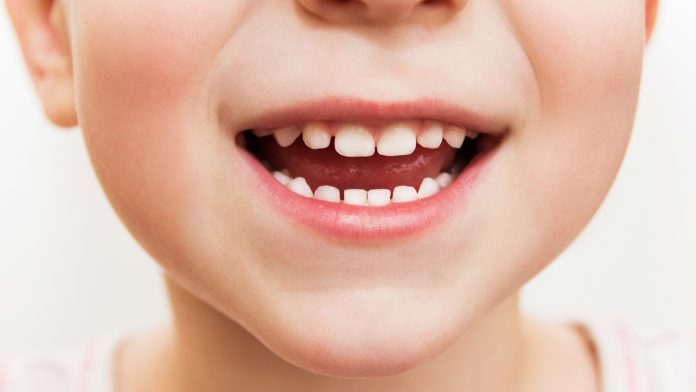
The thickness of growth marks in primary ‘baby’ teeth may identify children at risk of depression and other mental disorders as adults, according to an investigation by Massachusetts General Hospital (MGH) using data from a health study by the University of Bristol.
The team analysed 70 primary teeth collected from 70 children enrolled in the Children of the 90s study (or the Avon Longitudinal Study of Parents and children). Parents donated primary teeth, specifically the canines, as they naturally fell out during the ages five to seven. The results could lead to the development of a tool that can identify children at risk of mental disorders after being exposed to early-life adversity, a risk factor for psychological problems.
One-third of mental disorders potentially developed from childhood adversity
Senior author, Erin C. Dunn, ScD, MPH, is a social and psychiatric epidemiologist and an investigator in MGH’s Psychiatric and Neurodevelopmental Genetics Unit. She studies the effects of childhood adversity, which research suggests is responsible for up to one-third of all mental disorders. However, the lack of effective tools for measuring exposure to childhood adversity causes difficulty for scientists to understand child development. Another difficulty faced is asking people or their parents about painful childhood experiences causes reluctance and poor recollection.
“Teeth create a permanent record of different kinds of life experiences,” Dunn said. Exposure to physical stress, such as poor nutrition, can affect the formation of dental email and result in pronounced growth lines within teeth, called stress lines. These growth lines can vary based on the environment and experiences a child has in the utero and, shortly after, the time when teeth are forming. Thicker stress lines may indicate more stressful life conditions.
Testing and analysing the neonatal line
Dunn developed a hypothesis that the width of the neonatal line (NNL) could be an indicator of whether the infants mother experienced high levels of psychological stress during pregnancy and the early period following birth.
To test the hypothesis, Dunn and two co-lead authors – postdoctoral research fellow Rebecca V. Mountain, PhD, and data analyst Yiwen Zhu, MS, who were both in the Psychiatric and Neurodevelopmental Genetics Unit at the time of the study—led a team that analysed the teeth. The width of the NNL was measured using microscopes, and mothers completed questionnaires during and shortly after pregnancy on four factors known to affect child development. This included stressful events in the prenatal period, maternal history of psychological problems, neighbourhood quality (poverty level or safety, for example) and level of social support.
The study found that children whose mothers had lifetime histories of severe depression or other psychiatric problems and mothers who experienced depression or anxiety at 32 weeks of pregnancy were more likely than other children to have thicker NNLs. Furthermore, mothers who received significant social support after giving birth tended to have children with thinner NNLs. These trends remained intact after the researchers controlled other factors that are known to influence NNL width, like iron supplementation during pregnancy, gestational age (the time between conception and birth) and maternal obesity.
“No one is certain what causes the NNL to form, but it’s possible that a mother experiencing anxiety or depression may produce more cortisol – the stress hormone – which interferes with the cells that create enamel. Systemic inflammation is another candidate,” said Dunn, who hopes to study how the NNL forms. And if the findings of this research can be replicated in a larger study, she believes that the NNL and other tooth growth marks could be used in the future to identify children who have been exposed to early life adversity. “Then we can connect those kids to interventions, so we can prevent the onset of mental health disorders and do that as early on in the lifespan as we possibly can.”







